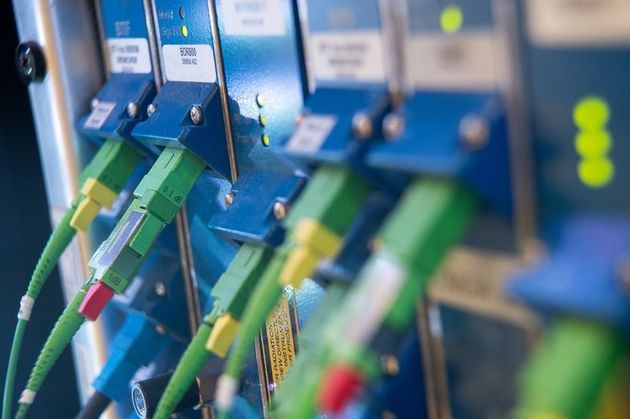The fiber is not expanding fast enough. In the latest edition of its broadband and very bandwidth observatory, Arcep, the regulator of the telecoms sector, is sounding the alarm. Already observed during the first quarter, the slowdown in the pace of fiber optic deployments (FttH) continued in the second. Only 870,000 additional premises were made connectable, or 20% less than over the same period of 2022.
With this quarterly growth of 2%, the fiber optic coverage rate reached 83% as of June 30. This means that of the 43.8 million premises recorded on the national territory, only 36.2 million are connectable. What calls into question the objective of a generalization of fiber throughout France in 2025 set out by the government? The map put online by Arcep still shows many white areas.
Big cities are stagnating…
On the ground, this slowdown does not apply uniformly. Paradoxically, it particularly affects so-called very dense zones (ZTD). In large cities and their agglomerations, fewer than 50,000 premises were made connectable in the second quarter, a drop of almost half compared to the same period last year.
A figure that makes Avicca jump. While telecom operators have fought to intervene in these 106 densely populated municipalities, they are slow to finish the job. The association which brings together communities involved in digital technology notes, on its site, that the completeness rate in Rennes has increased, in one year, from 92 to 93% of connectable premises. In Vanves, it fell from 95 to 94% over the same period.
These two cities are not chosen at random. They will be among the first to be affected by the extinction of the copper network which supports ADSL. “Vwanting to push, as Orange is doing, to close the ADSL network in a growing number of municipalities in the very dense area while stopping FttH deployments there is, let us say politely, incomprehensible », Tackles Avicca.
Some very dense areas have much lower coverage rates. We can cite those located in Meurthe-et-Moselle (77%), in Bouches du Rhône (81%), Puy de Dôme (84%), Hérault (85%), Loiret (86%). or the North (86%).
The situation is not necessarily better in moderately dense areas, known as “AMII” for “call for demonstration of investment intention”. Observed during previous quarters, the drop in the pace of deployment is confirmed with only 130,000 premises made connectable, a drop of almost half compared to the same period of the previous year.
“We have to go back to 2014 to observe such weak quarterly progress in these areas”, laments Arcep. At the end of the second quarter, around 89% of the premises in the municipalities in which Orange is committed are connectable. This rate rises to around 95% in the case of SFR. In view of these figures, the end of deployments in the private zone will not be effective in 2025 but rather in 2028, calculates Avicca.

…while rural areas accelerate
On the other hand, deployments in the AMEL zone accelerated in the second quarter with more than 90,000 premises made connectable. As a reminder, Calls for demonstration of local commitments (AMEL) allow communities to launch calls for tenders for operators in order to take charge of the deployment of fiber in municipalities excluded from the AMII.
This progress is, however, considered insufficient by Avicca for infrastructure operators to meet their commitments on time, with the notable exception of AMEL Saône-et-Loire (XpFibre). In Nièvre, the same operator XpFibre, belonging to SFR, reduced its initial delay from more than a year to six months. The association sees the results of the procedure launched by the State and the Nièvre Numérique joint union. As for the other AMELs, “ the deadlines are either all exceeded by more than a year, or are still too far away to hazard a prediction of delay. »
On the other hand, the level of deployment in sparsely populated areas, particularly in rural areas or in the mountains, remains high. With 600,000 premises made connectable, the Public Initiative Networks (PIN), combining public and private investments, are responsible for the majority of fiber deployment in France. “ The most dynamic territories have reached completeness », rejoices the Avicca. Good news in the fight against the digital divide.

